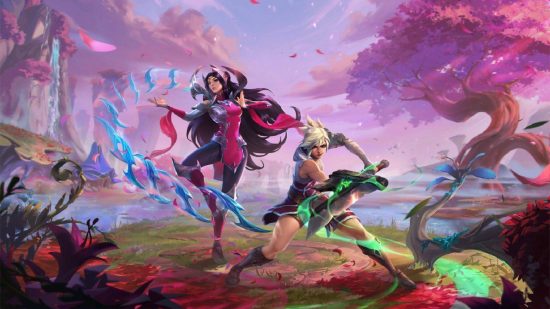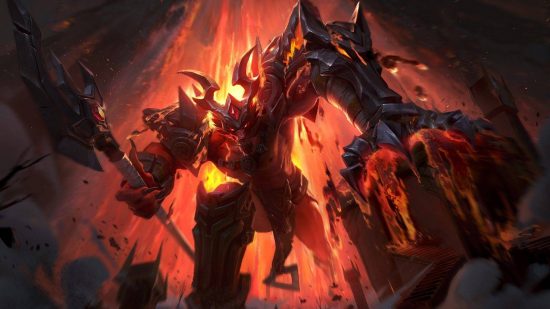League of Legends: Wild Rift is a fantastic competitive mobile MOBA, distilling a lot of what makes League of Legends great and adapting it for handheld touch screen platforms. It’s still tough as nails though, and the more you play, the more likely it is that you’ll bump into skilled opponents ready to smash you into next week. So what’s the best way to improve?
Our Wild Rift ranks guide is here to explain each of the competitive ranks from iron to diamond and what they all mean, as well as offering some handy tips on how to climb them. It’s going to be a long journey and a tough slog, but with a bit of guidance and some top tips, you’ll be the scourge of the battlefield in no time.
If you want even more great coverage of League of Legends: Wild Rift, be sure to check out our League of Legends: Wild Rift tier list, our articles on the League of Legends: Wild Rift pool party, League of Legends: Wild Rift patch 3.3, Riot Games pride month, and League of Legends: Wild Rift patch 3.2.
Come on then summoners, let’s dive into the brutal world of League of Legends Wild Rift ranks
Wild Rift ranks
What are the League of Legends: Wild Rift ranks?
With ten ranks in total, there are a variety of different levels you can play at. Rising up there is no easy task, and starting from iron you will slowly begin your journey all the way up through diamond to the ultimate level, challenger. Here is a list of every Wild Rift rank.
| Tier | Name |
| One | Iron |
| Two | Bronze |
| Three | Silver |
| Four | Gold |
| Five | Platinum |
| Six | Emerald |
| Seven | Diamond |
| Eight | Master |
| Nine | Grand Master |
| Ten | Challenger |
How to rank up in League of Legends: Wild Rift
After each victorious match in League of Legends: Wild Rift you’re awarded ranked marks, and earning a certain amount of these sees you rising up the ranks. Losing matches deducts a set amount of ranked marks off your score, and could possibly end up in you being demoted back down to a lower rank. When it comes to the iron through to emerald ranks, these are also broken up into individual divisions that you will have to work through before you reach the next rank.
Once you reach diamond, instead of ranked marks you earn victory points. These work much in the same way as ranked marks, but are also tied into the season. Once the season ends your rank may be changed depending on the overall levels of every player, and you can also be punished for being inactive. From emerald through to challenger is much more strict, and you need to stay at the top of your game to keep afloat, let alone rise up the ranks.
What is League of Legends: Wild Rift ranked fortitude?
League of Legends: Wild Rift has a unique reward system for good behaviour, which is a very handy way to make sure you don’t get demoted. From iron rank through to emerald, if you play well in a match and display good behaviour like winning multiple matches, playing well, or continuing to play when another player is AFK, you earn fortitude, which is displayed in a bar at the bottom of the screen.
Ranked fortitude acts as a buffer, so if you lose a game you can have some of your ranked fortitude deducted instead of your ranked marks, allowing you to avoid possible demotion. It also acts as a punishment for bad behaviour, meaning that, if you play in a way that negatively affects other players, you have your ranked fortitude taken away. This system helps to keep online matches friendly and approachable for all players, and is a neat way to deal with online toxicity.
That’s all we have for League of Legends: Wild Rift ranks today, but if you want to learn about even more great games to play right now, check out our bumper guide to the best mobile games.



